20 students complete graduate degrees
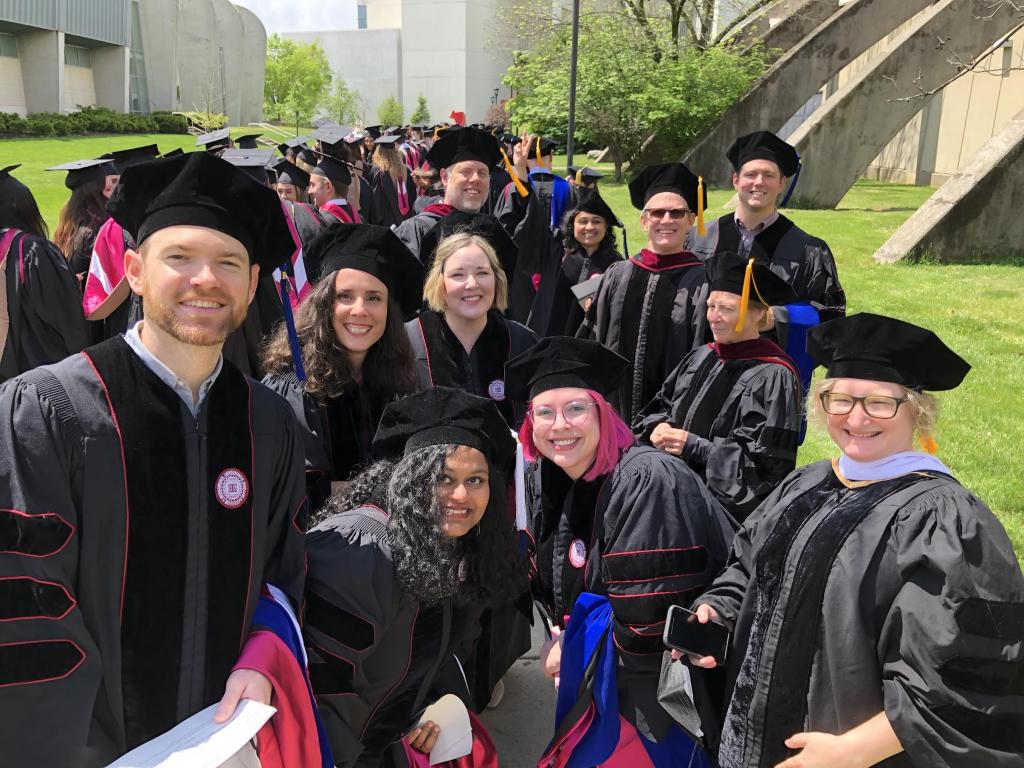
Seven Media School students became doctors this year, and 13 earned their master’s degrees.
Doctoral students
Under the guidance of faculty members, each doctoral graduate successfully defended and submitted a dissertation as the final step of the Ph.D. program.
The Evangelism of Tech Evangelism: Relationship and Community Building Practices of Communication Practitioners
Committee members: Lesa Hatley Major (chair), Nicholas Browning, Jason Peifer, Candy Gunther Brown
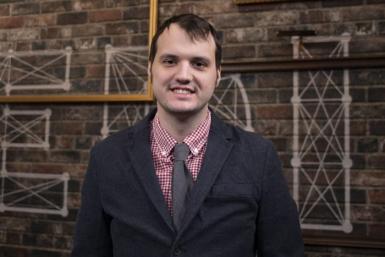
Abstract: Evangelists are communicators who encourage the adoption of branded innovations by building a network of relationships in virtual and non-virtual communities. The project includes two studies including the main study with all the Evangelists represented and followed by a case study that segmented by a group of Evangelists who work for the same coding boot camp. As communicators foremost, the results of the main study found a diverse range of storytelling techniques and content marketing from Evangelists to effectively build a network of relationships in the tech industry and in digital communities. The findings of the main study also revealed that Evangelists perceive evangelism to be centered on the user and, in some cases, personal and tied to Evangelists’ identity. Evangelists often use their own personal experience to build support for the organizational brand as thought leaders with speaking engagements and conferences to communicate the belief that technology can change lives and make an impact for organizations that might use their branded innovation. The case study found that the stressful environment of the boot camp allowed for strong relationships to form with Evangelists and with members of the learning community. Many of the evangelists were former students being a driving force behind evangelism efforts, which gave the Evangelists credibility and authenticity in their storytelling efforts. Based on the interviews from the main study and the case study, there is a conflict between Evangelists and organizations because organizations are unsure how to utilize an emerging practice that goes beyond “describing dollars and cents” as one participant states about tech evangelism. The implications for this study are useful for communication practitioners and academics who specialize in communication research. More research is needed to understand how to effectively build support for branded innovations with Evangelists in areas outside of the tech industry.
Cover Girls: Constructing Celebrity Girlhood in Teen Magazines of the 2000s
Committee members: Radhika Parameswaran (chair), Brenda Weber (chair), Joan Hawkins, Jennifer Maher
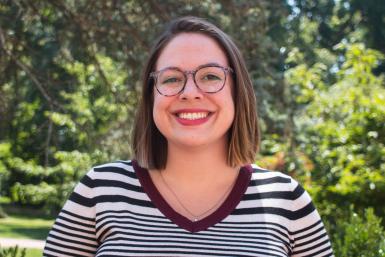
Abstract: Popular culture of the 2000s was intensely interested in the celebrity girl as a figure, given the massive buying power of the new youth market of Millennials — particularly girls — and a renewed popular interest in celebrities overall. This led to a rise of media devoted specifically to young female audiences, such as teen magazines. Long-running publications like Seventeen (established in 1944) were joined by a wave of “little sister” publications spun off of women’s magazines, like CosmoGirl and Teen Vogue. This dissertation examines six major teen magazine publications over the course of the decade to understand how they contributed to shaping our wider cultural understanding of who can be a celebrity girl, and what she might be like. Teen magazines are a useful site to analyze this because they are created by a range of people with distinct goals: magazine editors, writers and staff; industry professionals they collaborate with like photographers, make-up artists and fashion designers; companies of all sorts that pay to have their products and brands advertised in the magazines; and the celebrity girls themselves. Connor uses a mixed-methods approach, looking at separate aspect of teen magazines through different kinds of analysis in each chapter, to provide a well-rounded understanding of what they do. First, she uses a visual analysis to look at every teen magazine cover from the decade to provide an overview of who is considered a celebrity girl, demographically. Second, she uses a discourse analysis to look at the profiles of celebrity girls and readers’ letters about them, to identify what qualities people believe a celebrity girl should (or should not) have. Finally, she uses an industry analysis to demonstrate how teen magazines spread their ideas about celebrity girls to other media through their partnerships with reality TV shows.
The ‘Breathing’ Camera: Psychological Effects of Human-like Camera Flow in Visual Narratives
Committee members: Annie Lang (chair), Julia Fox, Geoffrey Bingham, Rob Potter
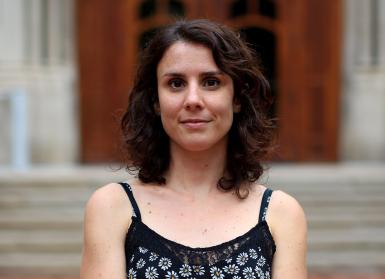
Abstract: This work looks at the psychological effects of the breathing camera, a type of camera optic flow (i.e., camera movement) that specifies a human observer quietly breathing. Drawing from J. J. Gibson’s (1979) ecological approach to perception, two key optical characteristics of the breathing camera are theoretically identified and experimentally manipulated to probe the influence of natural perception on mediated perception. The first, exteroceptive characteristic is the translation of the point of observation through space, which makes available the depth information of the surroundings through global optic flow. This should render the actors, objects and events in the moving image more three-dimensional, countering the flatness of the screen. The second characteristic is that the camera proprioceptively specifies a human observer by moving like a human and engaging in human-like events. The driving hypothesis is that, because it offers a visual experience similar to the viewer’s everyday experience of the world, the breathing camera is an immersive perceptual device that facilitates the engagement of the viewer with the narrative. The individual contributions of the two optical characteristics on the breathing camera effects are experimentally tested with three conditions: a real breathing camera condition where both types of information are available, a fake breathing camera condition where only human-like proprioception is available, and a no camera flow condition, where both types of information are absent. Two experimental studies are presented that use a combination of psychophysiological and self-reported methods to measure the effect of the breathing camera on the emotional and attentional responses of the viewer.
Yes, No, and Maybe: The Creation of a Multidimensional Scale to Measure Sexual Consent Behavioral Intentions and the Exploration of the Role of Campus Sexual Health Messages
Committee members: Lesa Hatley Major (chair), Melanie Sarge, Paul Wright, Zoe Peterson
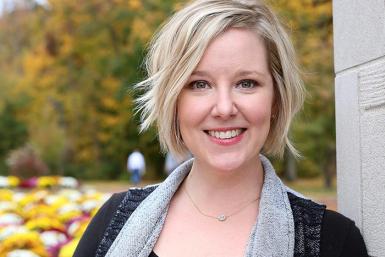
Abstract: Research suggests one in five women will experience sexual assault during their college careers. However, college’s Sexual Assault Prevention Education (SAPE) programs vary widely in their length, content, and effectiveness. While there is currently no validated scale to measure students’ sexual consent intentions as taught in SAPE, this dissertation sought to create a valid reliable scale to measure sexual consent, called Adherence to Sexual Consent – Behavioral Intentions (ASC-BI). Additionally, many SAPE programs are atheoretical; therefore this work examines if theory of planned behavior (TPB) provides decent explanation of ASC-BI.
Two samples were collected in order to create and validate ASC-BI. The first sample was a national sample of 500 Mechanical Turk workers who were currently enrolled in college. The second sample consisted of 369 college students enrolled in a large public university. Participants completed the survey online via a Qualtrics survey. They answered questions about their sexual behavior intent as well as their sexual attitudes and demographic information.
Results suggested a 5-factor solution for ASC-BI provided good fit; factors include seeking consent, giving consent, refusing unwanted sexual activity, accepting refusal and sexual communication. This work also established ASC-BI has convergent and divergent validity. Additionally, results suggested the TPB provides a good model for explaining ASC-BI. TPB cognitions, including attitudes, norms, and perceived behavioral control, also mediated the relationship between SAPE messages and ASC-BI. Finally, positive attitudes towards consent were a better predictor of ASC-BI compared to rape myth acceptance. Results provide practitioners and researchers with a valid tool for measuring sexual consent intentions. Additionally, results suggest practitioners should include TPB cognitions as mediating variables when assessing effectiveness of SAPE and focus on positive attitude change instead of eliminating rape myths. Findings also include information about gender differences and the impact of subjective norms.
Understanding Organizational News Sharing on Social Networking Sites: Multiple Motives, Social Network Closeness, and News Content Features
Committee members: Minjeong Kang (co-chair), Sung-Un Yang (co-chair), Nick Browning, Shankar Krishnan
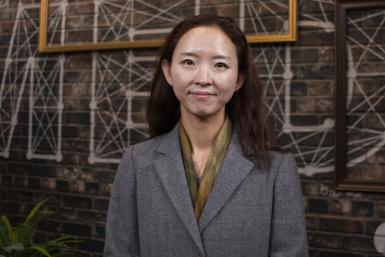
Abstract: This study aims at understanding why people intentionally share news about an organization on social media, so called organizational news sharing. The role of three potential factors, including motives, social network closeness, and news type were examined through three online surveys.
First, focusing on the context of social networking sites, this study developed and validated the scale of multiple motives that trigger organizational news sharing through two online surveys of U.S. participants. Participants were likely to share positive organizational news when they were motivated to enhance their self-image, help others, promote the relationships with others and empower an organization. Among these motives, self-enhancement was a primary motive for organizational news sharing. Meanwhile, participants were likely to share negative news when they were motivated to maintain their self-worth, protect others, defend the relationships with others and control an organization. Among them, protecting others was a primary motive for organizational news sharing.
Second, the results of Study 2 also showed that social network closeness played significant moderating roles in organizational news sharing. In other words, participants motivated to enhance their self-image or help others find useful information were more likely to share positive news with others for those who perceive their social network to be close and important than for those who perceive their network to be distant and unimportant.
Lastly, Study 3 revealed that news valence does not work alone to bring about news sharing. The findings indicated that a negative news story that depicts a company as an unethical entity were more likely than a positive news story that describes a company as a socially responsible entity to be shared by people. However, no difference in news sharing was found between a positive-competence news and a negative-competence news.
Smartphone World-Ecology and the Materialization of the iPhone 5c
Committee members: Stephanie DeBoer (chair), Raiford Guins, Rachel Plotnick, Rebecca Lave

Abstract: This dissertation investigates how a smartphone handset materializes in a particular historical moment as a unique configuration of matter, energy, labor, capital and power. It challenges dominant approaches to the study of media that conceptualize technologies like the smartphone as objects of material culture significant only in the context of their use. Rather, drawing on theories of media ecology and the world-ecology perspective, Stratton conceptualizes the smartphone as a planetary-scale socio-ecological process to make visible people, places, practices, processes and nonhuman elements of the natural world that are fundamental to media, but which have thus far largely remained unaccounted for in more traditional media studies approaches. Using the iPhone 5c as a case study, Stratton investigates three interrelated moments of the materialization process. He shows how economic pressures, design choices, ecological consequences and dynamics of social power are entangled in the becoming and unbecoming of a single smartphone handset model. Specifically, chapter 1 draws on political ecology to examine the economic pressures that led directly to design choices about the material composition of the iPhone 5c handset. Chapter 2 draws on political ecology to show how iPhone 5c design choices translate into ecological transformations in numerous geographic locations around the world. Chapter 3 then develops a methodological approach he calls critical ergonomics to show how an iPhone 5c design feature called iBeacon was intended to serve commercial interests by enabling handsets and their users to be incorporated into new marketing and retailing strategies. In approaching and analyzing the smartphone in this way, Stratton argues that media studies should incorporate ecology, the environment, geography and nonhuman natures into its analytical frameworks to better address ongoing ecological crisis, and growing inequalities.
How The Media Shape Public Perceptions of China: A Network Agenda-Setting Analysis
Committee members: Gerry Lanosga (chair), Lesa Hatley Major, Jason Peifer, Susan Herring

Abstract: Based on a content analysis of the U.S. media’s coverage of China in early 2021 and a survey on public perceptions of China, this study measured how depictions of China in media might influence public opinion regarding China from a networked perspective. Using the network agenda-setting (NAS) model and international image theory, this study analyzed how the American media and the public associated in their agendas the issues about China as well as attributes related to the COVID-19 pandemic, the U.S.-China trade war and the U.S.-China relations, the three most covered issues related to China in the U.S. media since 2020. It also measured the potential impact of several other factors, such as partisanship and personal traits, on the NAS effect.
The results of this study suggested that when covering issues and attributes related to China, the media would associate these issues and attributes in their agenda, and the pattern of such association could be transferred from the media agenda to the public agenda through network agenda-setting. The study found that associations of the issues and attributes that audiences learned from the media would be incorporated into their mental network and then interact with existing schemata such as personal traits to form a national image of China. It also found that partisan media were most powerful in setting the network agenda of the partisan audiences regarding the issue of COVID-19. This study further proposed an integrated network model of national image to explain how the public forms an overall image of a foreign nation.
Master’s students
Under the guidance of faculty members, each master’s graduate successfully defended and submitted either a thesis or capstone project as the final step of the M.A. or M.S. program.
- Brea Bailey, M.A.
- Violet Baron, M.A.
- Arianna Eiler, M.A.
- Noah Harrison, M.S.
- Lexi Haskell, M.A.
- Jackson Hicks, M.S.
- Taylor Killough, M.S.
- Sung Hyun Lee, M.A.
- Haley Pierce, M.A.
- Suri Pourmodheji, M.A.
- Katherine Pretlow, M.A.
- Anna Stamm, M.A.
- Xu Zhang, M.A.

